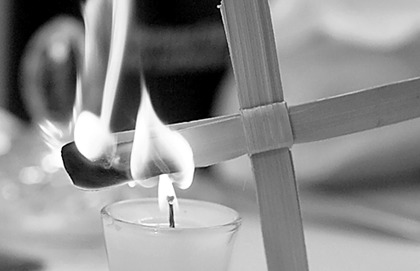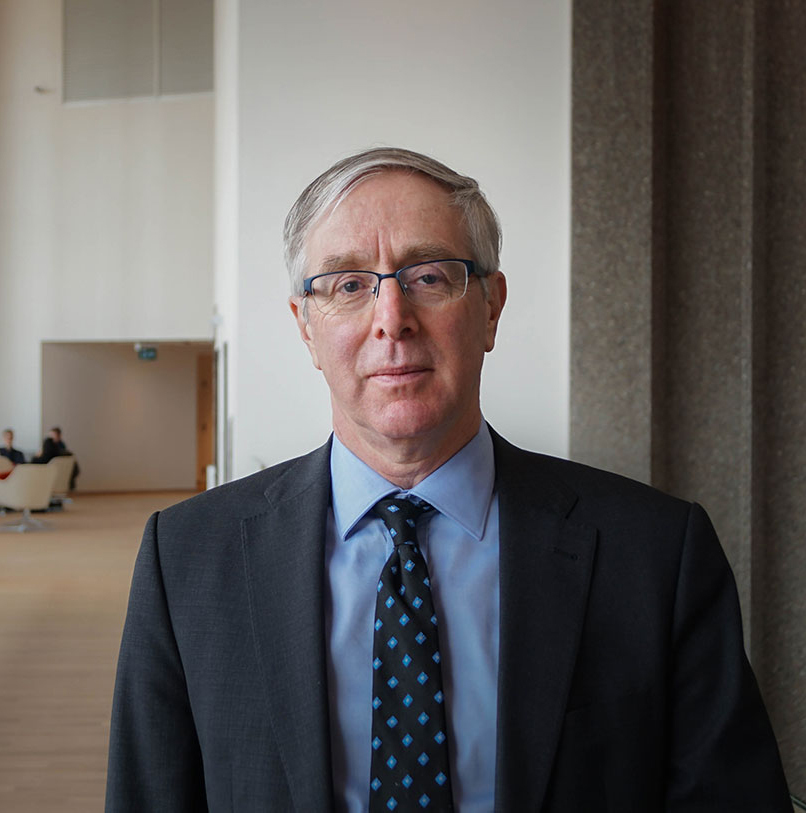When 2014 was still fresh, I e-mailed a friend the last stanza of Philip Larkin's "Church Going" to illustrate a point about serious things that endure.
I've written about Larkin in this space before, specifically the way the enfant terrible journalist Christopher Hitchens completely misunderstood him. As an aside, isn't it fascinating how we all felt it so important to talk about Hitchens' antics when he was alive, and no longer mention his name two years after his death? If all flesh is grass, as Isaiah says, then journalism is surely but a small bag of clippings. I digress.
"Church Going" is usually held out at as one of Larkin's two greatest poems – "The Whitsun Weddings" being the other – and is considered a 20th century literary high water mark. It does hold up to regular re-reading if only in anticipation of its phrase "some ruin bibber, randy for antique," which may well score the award for best six-word poetic pool shot in modern English. Re-reading it also holds up to the light, however, what a man of his times Larkin was (see Isaiah/flesh/grass above), at least until we get to the final stanza.
The poem, of course, ponders the imminent death of religious faith. It lets us look over the shoulder of a middle-aged British male in the mid-1950s as he rides his bicycle around the countryside, frequently giving in to an inexplicable urge to stop at dying churches. Church going has already become the Church going the way of all flesh, prompting our wandering ecclesial cyclist to wonder who "Will be the last, the very last, to seek/This place for what it was…?"
And then the last stanza makes what we, in hindsight, recognize as an almost miraculously prescient leap to answer the poem's own question:
A serious house on serious earth it is,
In whose blent air all our compulsions meet,
Are recognized, and robed as destinies.
And that much never can be obsolete,
Since someone will forever be surprising
A hunger in himself to be more serious,
And gravitating with it to this ground,
Which, he once heard, was proper to grow wise in
If only that so many dead lie round."
Someone will forever be surprising a hunger in himself to be more serious and gravitating with it to this ground. In the midst of all his era's fashionable babble about God being dead and the churches going on life support – and, equally, of religious observance being overtaken by mere nostalgists parodically "randy for antique" – springs recognition of the eternal human hunger that only faith can satisfy. There will never be a "last…very last to seek" because that hunger will always be there.
Sixty years on from the publication of "Church Going," the incontrovertible evidence shows this is part that Larkin's great poet's heart got right. As articles in this issue of Convivium make plain, religious faith is not going. It is growing. Even in Britain, as our editor-in-chief Father Raymond J. de Souza notes in his Small Talk column, church attendance is actually up overall.
In researching her story on the state of the Church in China, too, Naomi Biesheuvel found that a century of increasing persecution of Christian faith was unable to eradicate the seeds planted by Catholic and Protestant missionaries long ago. The Chinese Church may not be basking in the Four Winds of Happiness – living out religious faith still requires a delicate dance with the Communist dragon – but it is feeding the increasing hunger for the Word.
In Vancouver writer Trevor Carolan's beautiful meditation on Ash Wednesday, as well, we can experience keenly the inescapable gravitational pull to the serious ground that Larkin names. We can experience it not just at the level of universal institutional Church but in the pull of the individual human heart toward home.
A student of Buddhism for 40 years, Carolan lives anew the meaning of the Lenten ashes from his Catholic childhood, not as a gesture of nostalgia for an antique faith but as an outward sign of the truth that hunger – spiritual but also physical in the form of acquired abstinence – is good for the human heart. He notes it is a good that, far from being quenched, is increasingly being shared.
"Downtown in Vancouver, I notice more now the smudge of ash upon the forehead, the mark of Adam, worn not as a symbol of mortification but of mindfulness, of atonement," Carolan writes. "Not all that long ago, this would have been in bad taste...."
Someone will forever be surprising a hunger in himself to be more serious and gravitating with it to this ground.
As I e-mailed to my friend, we tend these days to make "serious" a synonym for somber. We tend to mistake it for a mood or even a mood of moodiness. Worst case, we misconstrue it as the anger antics ephemeral journalists such as Christopher Hitchens stage to attract our fleeting attention. Hunger for religious faith re-grounds us in a seriousness proper to grow wise in, even if only that so much grass lies round.
Peter Stockland
Publisher






